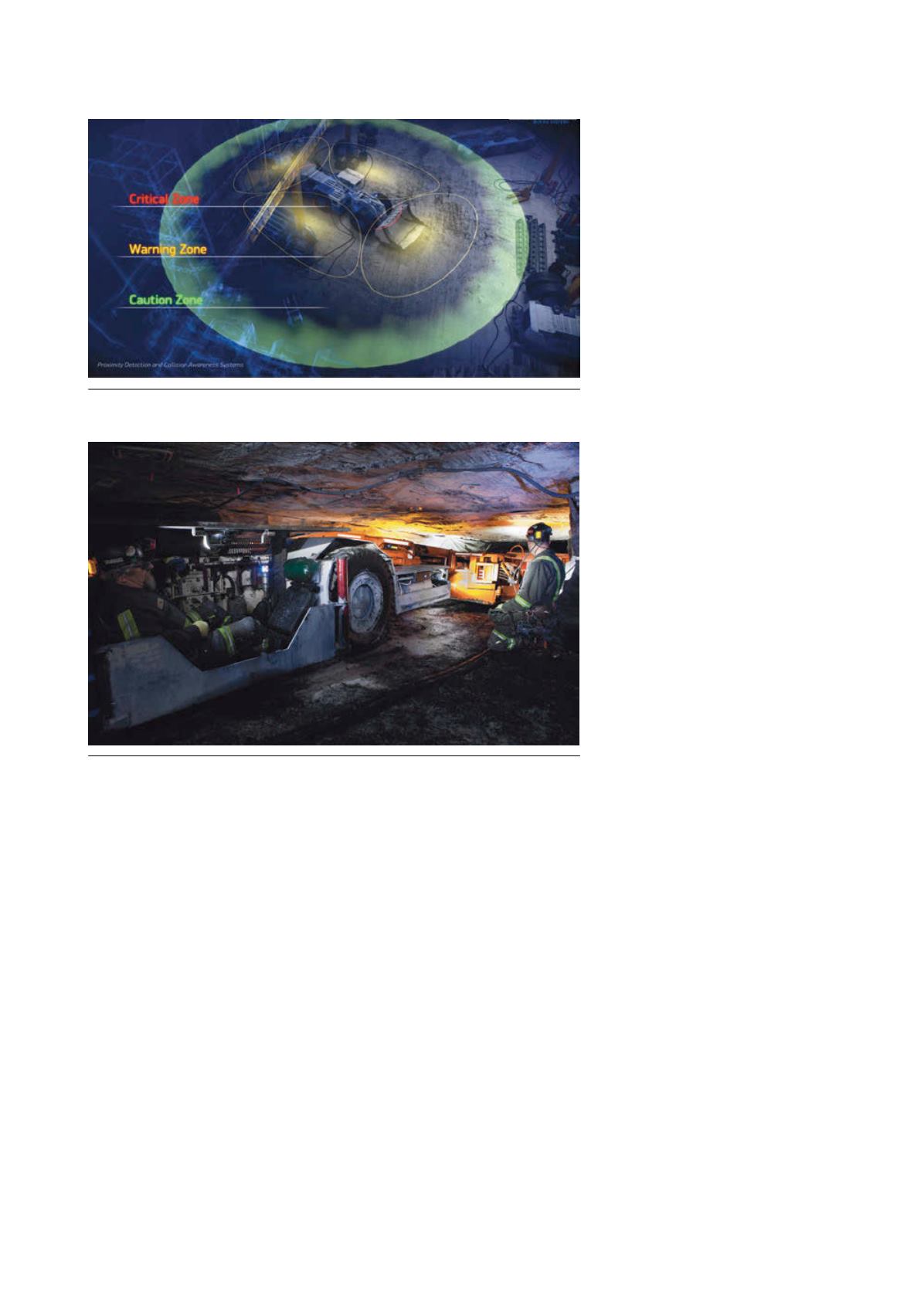
Proximity systemmanufacturer Strata
Worldwide’s Chief Operating Officer,
David Jenks, commented: “Most
countries have their own requirements
for functionality and approvals of the
systems. South Africa mandates that
‘proximity’ must be installed on all
mobile mining machinery to slow, stop
or disable the machinery, or whether a
visual and audible alarm only is
required.”
Technical approach
Different technological approaches have
been suggested for proximity detection
and collision avoidance systems, but
electromagnetic fields and radio
frequency identification (RFID) have
been the most widely adopted so far.
NIOSHworked successfully in a
programme, led by Research Scientist
Joseph DuCarme, on proximity detection
for continuous miners before its current
programme on the wider field of mobile
equipment. It has been working mainly
with safety zones created by pulsed
electromagnetic fields produced by
generators mounted on the mobile
machine in question. James Noll is a team
leader within the NIOSH Electrical and
Mechanical Systems Safety branch that,
in addition to proximity systems, also
works on research of refuge alternatives
and mine communications systems.
Noll explained: “Most of our projects
are driven by stakeholder inputs and
injury surveillance data.”
DuCarme continued: “NIOSH does
research for the safety and health of
miners, with input from stakeholders
and its proposed study is peer-reviewed
before a project is started. We provide
MSHAwith information about their
proposed rule, such as the proposed
proximity systems rule for mobile
equipment. Given the opportunity, other
mining stakeholders also provide input
on proposed rules. MSHA then finalises
and publishes its proposed rule for
enforcement.”
“Our current programme on mobile
equipment has been running for three
months, but some classes of equipment
may not be included if there have been
no accidents with them. We are covering
scoops, loaders and shuttlecar
interactions with pedestrians and
potential collisions between vehicles,
primarily working with hardware and
sensor/control technology and so are
producing machine performance
guidelines for the mining industry.”
DuCarme explained that proximity
system design for general mobile
equipment is more complex than it was
for working with the less mobile
continuous miners. “Various turning
circles for different angles of corner,
articulated chasses with left and right
turns likely, all introduce more variables.”
Ideally proximity detection can be
divided into various zones to enable
warnings to be issued without
equipment stoppage, automatic slowing
of a vehicle or automatic stoppage if a
pedestrian, for example, is in extreme
danger. The geometry of such ‘stepped’
zones may not be easy since they will
depend on the variable geometry and
movement of plant, and so sophisticated
electronic controls may well be required.
Does NIOSH have a role in reliability
assessment? “Manufacturers of the
systems are responsible for total system
reliability. We have carried out a
performance study with proximity
systems on continuous miners
concerning repeatability and accuracy of
warning and stop zones,” reported
DuCarme, “which is due for publication
during February.”
MSHAhas only approved
electromagnetic systems for use in coal
mines involving intrinsically safe
circuitry. Other potential technologies,
such as RFID and radar, are not
approved in the US for proximity
detection systems.
Asked to comment on reports that
the use of electromagnetic proximity
Frame from an animation of the protection zones generated by a Becker Mining
collision avoidance system.
Multiple machines and multiple miners can operate seamlessly with Strata’s
HazardAvert system.
42
|
World Coal
|
March 2016


